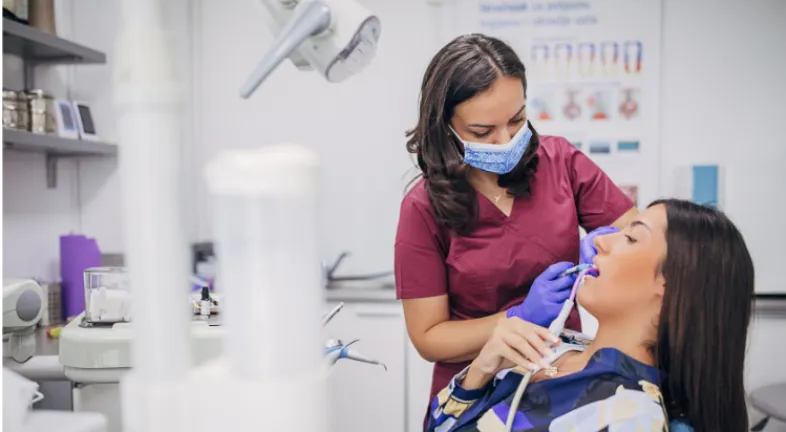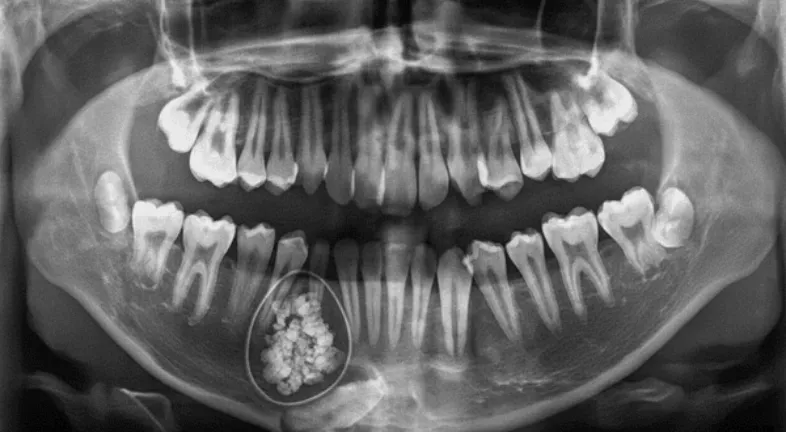
Anyone who ever wants to straighten their teeth thinks braces are the way to go. And this thought can sometimes make you retract and think, do I even want to wear metal wires for months, if not years? You're not alone. More and more people are looking for alternative ways to fix crooked teeth without braces, and the good news is, it's absolutely possible.
Whether you're put off by the look of traditional braces, worried about the discomfort, or just want a faster, more discreet solution, there are non-braces teeth straightening options that can help. In this blog, we'll explore the best alternatives, what works (and what doesn't), and how to decide what's right for your smile.
First things first: braces work. They’re tried, tested, and trusted by orthodontists everywhere.
But still, many of us hesitate. Maybe it’s the visibility. Maybe it’s the discomfort. Maybe it’s the cost. Or maybe it’s just the idea of reliving high school flashbacks you’d rather forget.
Before we dive into the alternatives, it helps to know what we’re dealing with.
Crooked teeth can be caused by:
Some people have just one or two teeth slightly out of place. Others might have crowding, spacing, or bite issues that make their smile (and even chewing) feel off.
Now let’s get to the fun part: how to straighten them, without braces.
Whatever your reason, you’re not alone in wondering about non-braces teeth straightening options. And the good news is: they do exist.

One of the most well-known and widely used alternatives is clear aligners for crooked teeth . Brands like Invisalign and, more recently, at-home options like Caspersmile have made aligners mainstream.
Clear aligners are custom-made, transparent trays that gradually move your teeth into alignment. You wear each set for about two weeks before switching to the next. The best part? They're nearly invisible and removable.
Pros:
Cons:

If your teeth are only slightly misaligned or you’re more concerned about the look rather than the function, veneers for teeth straightening might be an option.
Veneers are thin shells (usually porcelain or composite) placed over the front of your teeth to improve appearance. They can make your teeth look straighter, whiter, and more uniform.
Pros:
Cons:
Best For:
People with slightly crooked front teeth who want a cosmetic fix rather than functional correction.
With the rise of telehealth and home-based treatments, many companies now offer teeth straightening at home. These kits typically involve taking impressions at home, receiving a treatment plan remotely, and wearing clear aligners without visiting a clinic.
Yes, for mild to moderate cases. The key is choosing a provider that offers professional oversight, like Caspersmile, which uses licensed dental professionals to review and guide your treatment.
Pros:
Cons:
For minor misalignment or uneven teeth edges, contouring (also known as enameloplasty) can be a super quick solution.
A dentist gently removes small amounts of enamel to reshape the teeth. It’s pain-free, instant, and doesn’t require follow-up.
Pros:
Cons:
We’ll keep this short: don’t do it.
Trying to shift your teeth using rubber bands, paperclips, or any other unapproved method can cause permanent damage, including tooth loss. Always stick with dentist-approved options.
In many mild-to-moderate cases, Invisalign is just as effective as braces. It may even be faster for some adults. However, braces still have the edge for complex bite corrections. Here is a quick comparison between clear aligners and braces .
| Feature | Clear Aligners | Traditional Braces |
| Visibility | Nearly invisible | Very visible |
| Comfort | Smooth and wire-free | Brackets and wires |
| Removability | Can take out to eat or brush | Fixed to your teeth |
| Maintenance | Easy to clean | More complicated hygiene |
| Best For | Mild to moderate issues | Complex cases |
Bottom line? If you qualify for clear aligners and want the freedom to eat, smile, and live your life without a mouth full of metal, they’re worth exploring.
Absolutely. From clear aligners to cosmetic veneers, there are more ways than ever to fix your smile without metal brackets. It all depends on your teeth, your goals, and your budget. The most important step? Talk to a dental professional to figure out what’s safe and effective for your situation.




Curated the best for your knowledge
.webp) Tooth Resorption: Causes, Symptoms, and Treatment Options
Tooth Resorption: Causes, Symptoms, and Treatment OptionsTooth resorption often goes unnoticed until real damage appears. Many people discover it during a routine dental visit and feel a wave of fear, wondering how such a hidden process could silently weaken their smile. The truth is that tooth resorption is more common than most expect, and early detection can make all the difference. By understanding why it happens, how it progresses, and which treatments actually work, you can protect your teeth with confidence. You don’t have to feel overwhelmed. When you know what to look for, you stay one step ahead and safeguard your long-term oral health.
Read More Teeth Troubles Explained: Causes, Symptoms & Fixes
Teeth Troubles Explained: Causes, Symptoms & Fixes Teeth problems happen when we take our pearly whites for granted. When our smile is nice and healthy, we don’t think much about it. And the moment things go south, we panic. Saving, or remaking, that smile becomes a priority. For some, though, the issues are present right from the start. Misalignment, bite issues, and teeth troubles that are more “structural” in nature. They don’t happen due to neglect; rather, they are given by luck, God, nature, whatever you believe in. That being said, no matter the type of tooth trouble, there’s a solution out there. And we’re exploring all that today, teeth diseases and treatment, one by one.
Read More Odontomas: What They Are and How They're Treated
Odontomas: What They Are and How They're TreatedSome dental conditions are quiet. Too quiet, in fact. Odontomas fall into that category. They rarely make noise, yet they change things beneath the surface. And people usually have no idea about them. While malocclusions, teeth shifting, discoloration, or other cosmetic dental issues are fairly well known, odontomas are not. So, an odontoma is technically a type of tooth tumor. It’s benign, harmless, but oddly structured. Hence, it can interfere with tooth eruption, displace teeth, or cause swelling. However, there’s more to it. Here’s a deeper dive.
Read MoreQuick Links

Heading